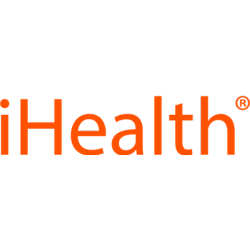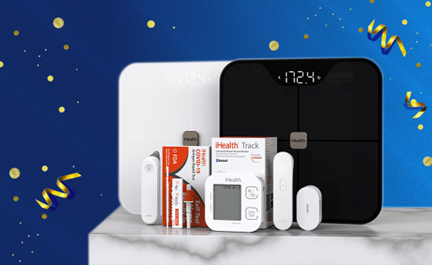Artificial Sweeteners: How Sweet It Is
There's nothing I wouldn't do for some sweet snacks once in a while. And when weight and health is a focus, it's hard to navigate the candy aisle. There are all kinds of sweets out there, even sugar substitutes for diabetics and people trying to lose weight. But there is so much controversy surrounding artificial sugars and sugar substitutes... Is it still alright to eat my sucralose-laden fiber one bars? Should I opt for the sweeter-than-sugar stevia-sweetened protein powder? Isn't one of these sugars linked to cancer? Is there a way to make sense of it all?

Are They Considered Safe?
FDA is required by law to review all new food additives for safety before they can go on the market. The process begins when a company creates a substance and starts testing it. The company then submits a food additive petition to FDA seeking approval. The FDA reviews all the scientific evidence submitted by a company to ensure the product is safe for the intended use before approving it. The FDA does not typically, however, run their own independent tests on these foods.
One exception is for substances "generally recognized as safe," or GRAS, because those substances are generally recognized by qualified experts as safe under the conditions of intended use and are exempt from the food additive approval process.
If you ask me, or most any good Dietitian, they'll have some strong personal opinions on the FDA process.



You’re Sweeter than All the Sugars in All the World
There are many ways to sweeten a food these days. To make things easier, I’ll break sugars down for you into four categories: those that provide calories (natural and manmade), and those that don’t have calories (sugar derived non-nutritive sweeteners and plant-based nonnutritive sweeteners).
Nutritive Sweeteners:
These sweeteners are what your Grandmother was accustomed to using. All of these are digested and broken down similarly, become glucose and provide energy (calories).
Examples: sugar, brown sugar, molasses, agave nectar, “raw” sugar, corn syrup, honey and maple syrup.
Sugar Alcohols:
This is an in-between category. They provide about half the energy (calories) than sugar, because they’re more difficult to digest. They may cause gastrointestinal discomfort and diarrhea in larger quantities.
Examples: chemical names on ingredients lists are sorbitol, xylitol, mannitol, erythritol and maltilol, and are mostly used in sugar-free gum and candies.
Non-Nutritive Sweeteners
These are low or no-calorie artificial sweeteners that provide little energy. Since they do not have carbohydrates they do not, themselves, raise blood sugar levels or promote tooth decay.
- Saccharin, was first discovered and used in 1879, before the current food additive approval process came into effect in 1958. Brand names include Sweet‘N Low
- Aspartame, first approved for use in 1981. Brand names include Equal*
- Advantame**, *** newly approved by FDA in 2014. No brand name yet.
- Acesulfame potassium (Ace-K), first approved for use in 1988. Brand names include Sweet One
- Sucralose, first approved for use in 1998. Brand name is Splenda
- Neotame, approved by FDA in 2002. Brand name Newtame
Plant-based Non-Nutritive Sweeteners
The FDA has received and not questioned GRAS notices for two types of plant/fruit based high-intensity sweeteners:
- steviol glycosides obtained from the leaves of the stevia plant (Stevia rebaudiana (Bertoni) Bertoni)
- extracts obtained from Siraitia grosvenorii, Swingle fruit, also known as Luo Han Guo or monk fruit.
Why is the use of Artificial Sweeteners still in question?
So the FDA says they’re safe. Why do people keep worrying? It would seem that artificial sweeteners are a great way to “have your cake and eat it, too” without adding calories, but recent studies have shown that Mother Nature isn’t fooled by good-looking imposters.
Sugar-Free is Not so Free
Our bodies have sweet-taste receptors on our tongues, and also all throughout the gut and in the pancreas. When these receptors detect something sweet, whether from dietary sugar or artificial sweeteners, they tell the brain to prepare the body to absorb sugar, turning on a mechanism that causes the body to absorb more carbohydrates and convert it to fat. With the added sweetness of artificial sweeteners, the body may actually absorb more sugar from carbohydrates than it would with actual sugar.
Mice studies have shown that artificial sweeteners make mice more efficient at absorbing sugar from their diet. In research published in Behavioral Brain Research conducted at Purdue University, rats fed yogurt sweetened with saccharin gained more weight than rats fed yogurt sweetened with glucose (simple sugar). They also consumed more calories, had bigger appetites, and put on more body fat. The hypothesis is that sweet foods send the body a strong signal that it’s about to get a lot of calories. The body prepares to eat more calories, increasing hunger signals, but when excess calories don’t appear in the diet the individual is driven to eat more.
Sugar Addict?
Another problem with artificial sweeteners is that, because of their intense sweetness, they actually stimulate rather than curb sweet cravings, and over-stimulation of sugar receptors from frequent use limits tolerance for more complex tastes. A peach or strawberry may seem sweet to someone who limits their intake of sweets, but to someone who regularly sweetens their food with artificial sweeteners, they may perceive naturally sweet foods as bitter or sour, and foods without any sweetness, such as vegetables, may actually seem appalling. Translating that to a human example, this means that if two identical people ate the same diet with the same calories, but one person drank diet soda and the other drank water, the diet-soda drinker would absorb more glucose from the diet than the person drinking water. They also might be hungrier on average, gain more weight, and may have more sweet cravings than the person drinking water.
Also, in the pancreas, sweet receptors activate insulin secretion, so any sweetener that sets them off, whether real of fake, might actually increase the risk of development of insulin resistance and diabetes.

Do artificial sweeteners cause cancer?
There was a 1970’s study that raised concern over saccharin’s cancer-causing properties has since been disproved. Bladder cancer found in male rats in that study was a result of a mechanism that doesn’t occur in humans. In laboratory studies, the dose of artificial sweetener is typically greatly inflated in relation to the normal (or estimated daily intake EDI) usage by people. There were a few less correlated studies done that were inconclusive regarding health risk. However, no laboratory studies of non-nutritive sweeteners have since shown a strong association with increased cancer risk in humans.



The Take Home Message:
Use regular and artificial sweeteners in moderation. Avoid foods that are sweetened with anything other than fresh fruit, and you shouldn’t have much problem controlling cravings and blood sugars. So sorry, but that fat free, sugar free Boston Cream pie flavored yogurt is probably worse for you than you want to believe. If you really must have sweets, you’re probably better off using the plant-based sweeteners or going all natural.
*People who have phenylketonuria (PKU), a rare genetic disorder, have a difficult time metabolizing phenylalanine, a component of both aspartame and advantame. Newborns are tested for PKU using a common “heel-prick” test before they leave the hospital, so parents will know of this diagnosis at birth. Foods containing aspartame must bear an information statement for people with PKU alerting them about the presence of phenylalanine.
**Advantame is much sweeter than aspartame, so only a very small amount needs to be used to reach the same level of sweetness. As a result, foods containing advantame do not need to bear that statement.
*** Center for Science in the Public Interest (CSPI), who has commented on all of the nonnutritive sweeteners, raised an objection about advantame being declared safe. CSPI wrote the FDA one month after advantame was approved declaring that two of the key studies used to assess safety were “significantly flawed and provide an inadequate basis for ensuring safe use of the ingredient.” In particular, CSPI voiced concern about one study in which a significant number of mice died after being given advantame. CSPI also claims that a study involving rats was compromised because weaker and abnormal rats were excluded from the study, leading to biased outcomes.
This feature is coming soon
-
March 04, 2024
-
October 10, 2023
-
October 04, 2023
This feature is coming soon
You May Also Like
Title placeholder
posted_date placeholder
Title placeholder
posted_date placeholder
Title placeholder
posted_date placeholder
Title placeholder
posted_date placeholder
Title placeholder
posted_date placeholder
Title placeholder
posted_date placeholder
Title placeholder
posted_date placeholder
Title placeholder
posted_date placeholder
Title placeholder
posted_date placeholder
Title placeholder
posted_date placeholder
Title placeholder
posted_date placeholder
Title placeholder
posted_date placeholder
Title placeholder
posted_date placeholder
Title placeholder
posted_date placeholder
Title placeholder
posted_date placeholder



